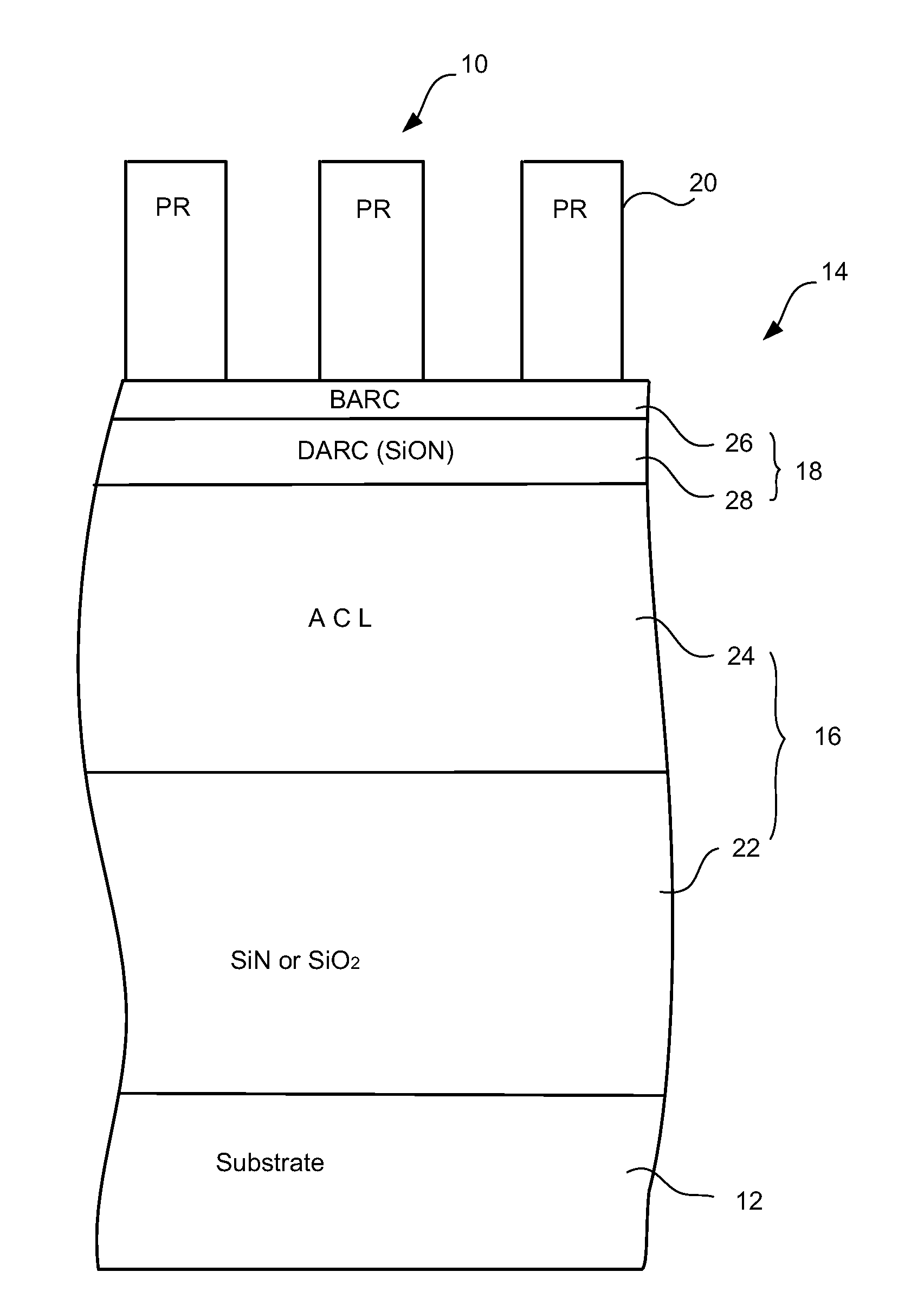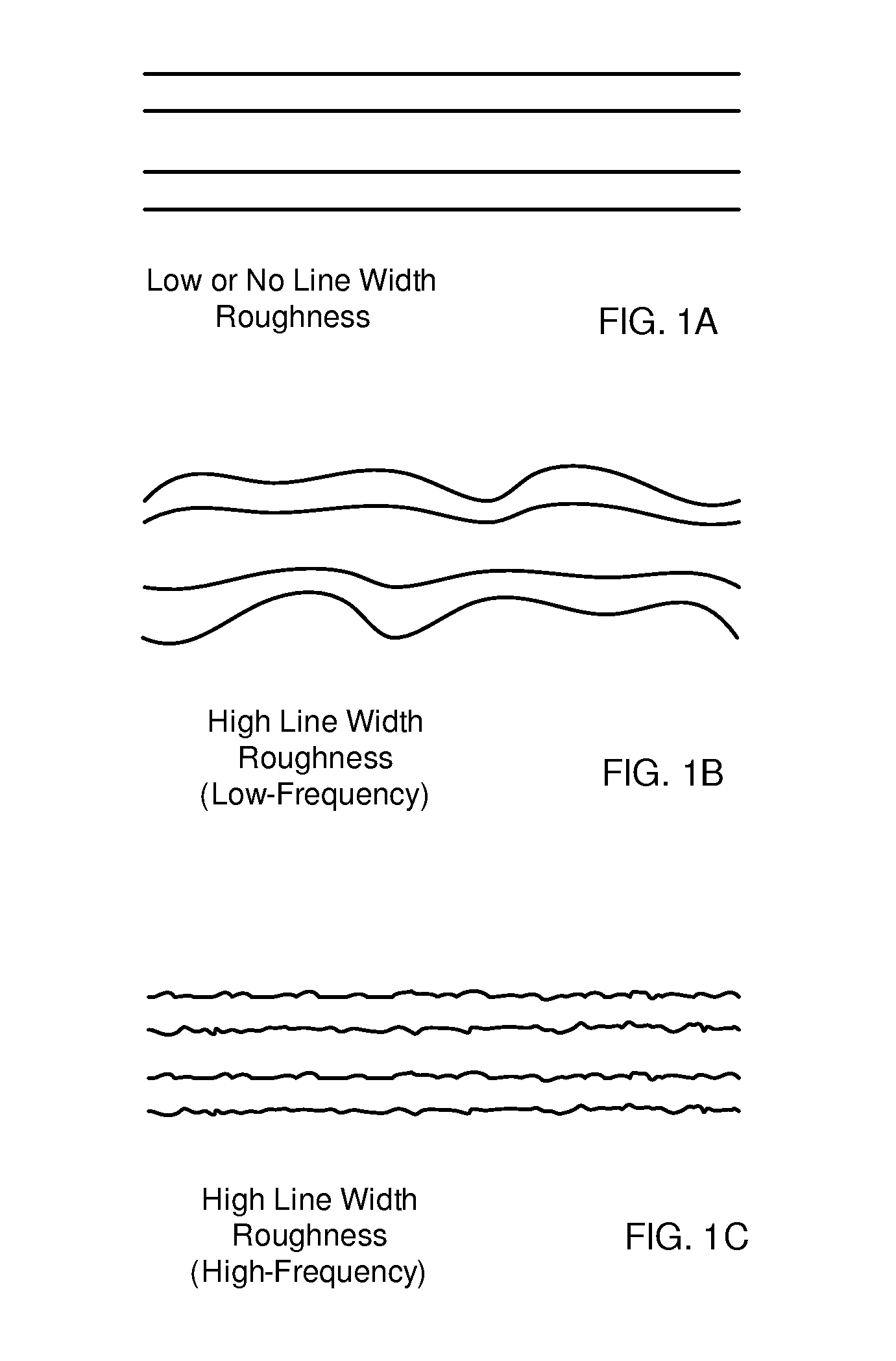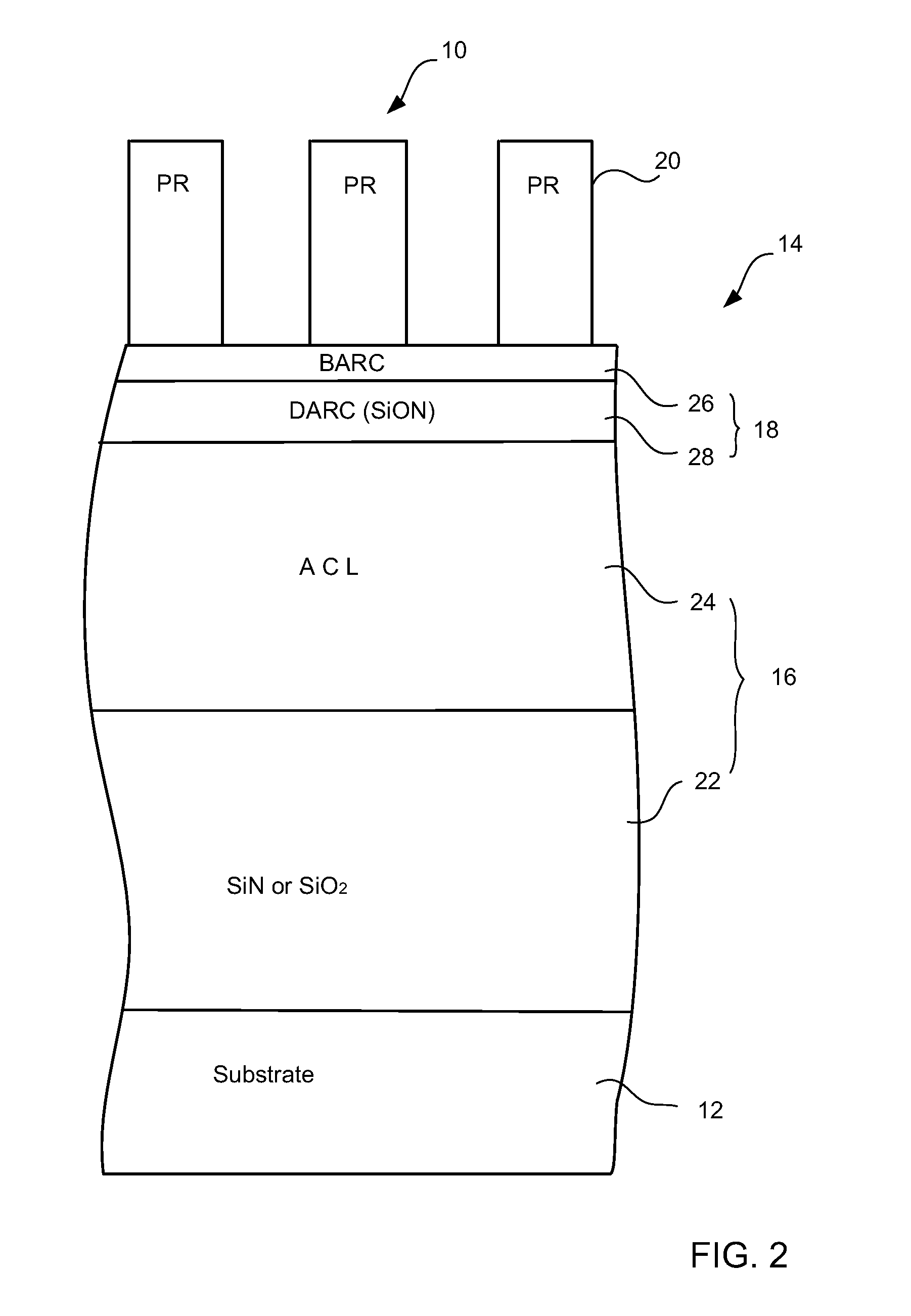Method for reducing line width roughness with plasma pre-etch treatment on photoresist
a pre-etch treatment and plasma technology, applied in the direction of electrical discharge tubes, decorative arts, electrical equipment, etc., can solve the problems of line edge roughness (ler) and variation, affecting the quality of plasma pre-etching, etc., to achieve the effect of reducing the line width roughness of a featur
- Summary
- Abstract
- Description
- Claims
- Application Information
AI Technical Summary
Benefits of technology
Problems solved by technology
Method used
Image
Examples
Embodiment Construction
[0022]The present invention will now be described in detail with reference to a few preferred embodiments thereof as illustrated in the accompanying drawings. In the following description, numerous specific details are set forth in order to provide a thorough understanding of the present invention. It will be apparent, however, to one skilled in the art, that the present invention may be practiced without some or all of these specific details. In other instances, well known process steps and / or structures have not been described in detail in order to not unnecessarily obscure the present invention.
[0023]To facilitate understanding, FIG. 2 is a schematic cross-sectional view of an example of a wafer stack 10 for front end of line (FEOL) applications such as dielectric material etch in which embodiments of the present invention may be applied. The wafer stack 10 includes a substrate 12 and a stack of layers 14 formed on the substrate 12. As shown in FIG. 2, the stack of layers 14 incl...
PUM
| Property | Measurement | Unit |
|---|---|---|
| thickness | aaaaa | aaaaa |
| bias voltage | aaaaa | aaaaa |
| bias voltage | aaaaa | aaaaa |
Abstract
Description
Claims
Application Information
 Login to View More
Login to View More - R&D
- Intellectual Property
- Life Sciences
- Materials
- Tech Scout
- Unparalleled Data Quality
- Higher Quality Content
- 60% Fewer Hallucinations
Browse by: Latest US Patents, China's latest patents, Technical Efficacy Thesaurus, Application Domain, Technology Topic, Popular Technical Reports.
© 2025 PatSnap. All rights reserved.Legal|Privacy policy|Modern Slavery Act Transparency Statement|Sitemap|About US| Contact US: help@patsnap.com



